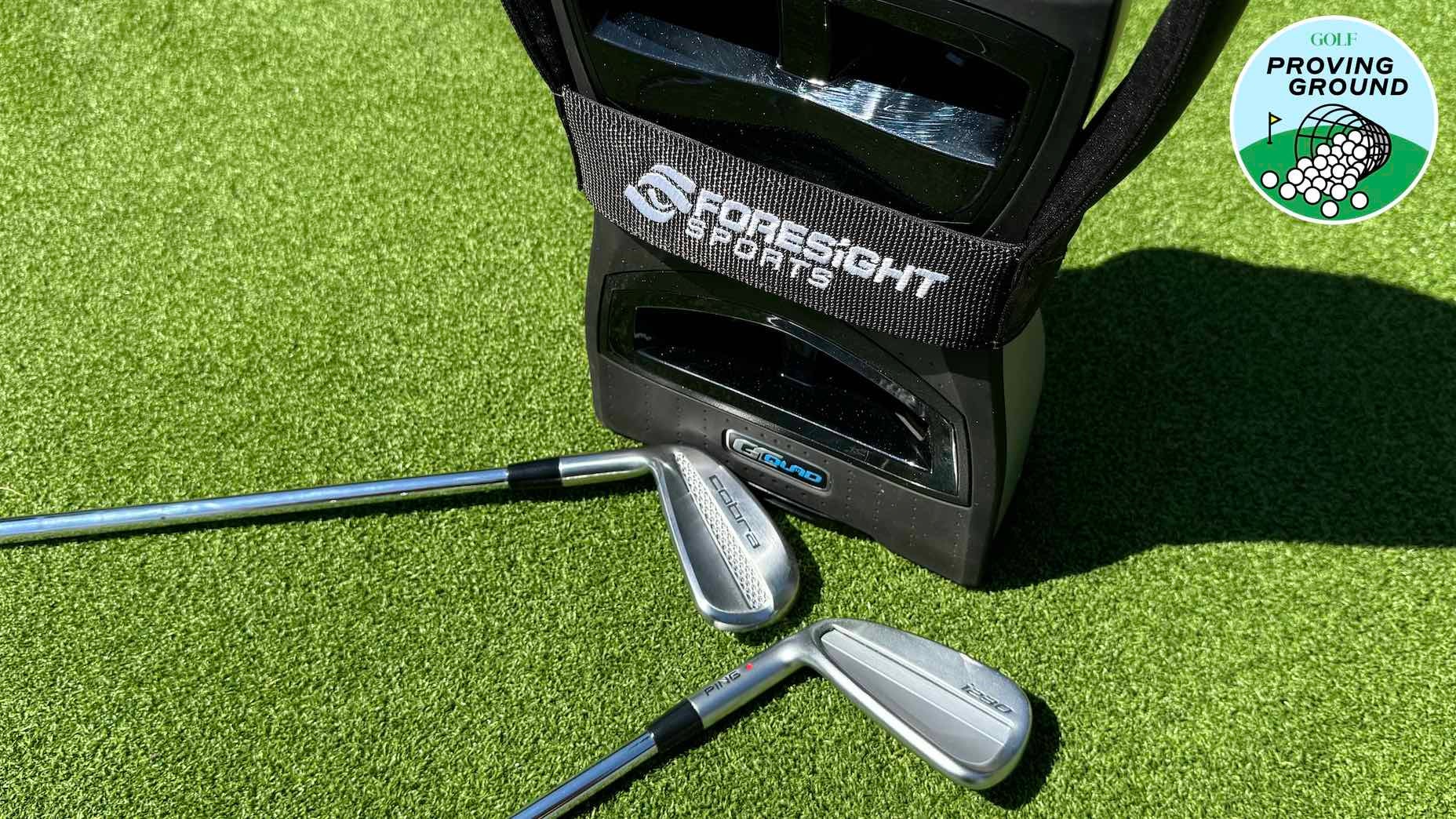Welcome to GOLF.com’s ClubTest Proving Ground, where Managing Equipment Editor Jonathan Wall and Senior Equipment Editor Ryan Barath put the latest designs and groundbreaking technology in the equipment space to the test on the range and the course.
The tools: VKTRY Gold VK carbon fiber performance insoles
The test: To determine if a carbon fiber insole can provide a measurable performance benefit on the course.
The results: I try not to play favorites in the golf space, but the Padraig Harrington tractor beam is nearly impossible to resist. Let’s start with his fascinating (and sometimes hilarious) chase for more ball speed at the age of 52. And the backyard lessons, which resulted in this relatable moment. And the measured opinions on the future of the sport. And don’t forget about the adorable pups.
When Harrington speaks, I usually take notice — even when he’s playing the role of pitchman for VKTRY Performance Insoles. The aerospace-grade carbon fiber insoles were initially touted as a great option for athletes who wanted to jump higher, run faster and reduce injuries.
In recent years, they’ve started to gain traction in the golf space as well.

Always one to seek out an edge on the course, Harrington heard about insoles and decided to give them a shot to see what all the buzz was about.
“I heard some PGA players were wearing VKTRY Insoles, so I went online and bought a pair,” Harrington said. “With VKs, I immediately achieved my personal best ever in ball speed: 196 mph. These insoles help give me more stability and improve the ground force I can generate. I learned a long time ago that you can’t launch a rocket from a canoe. For me, using VKs is a no-brainer.”
It’s important to point out that Harrington is compensated by VKTRY, so I took his insights with a grain of salt, especially the claim that a pair of insoles could help you gain 2-plus mph of ball speed through improved ground force. Simply put, it’s a bold claim.

On the flip side, carbon fiber has helped take golf equipment to a new level since it was first introduced in the industry, so my interest was piqued — to the point that I decided to take the insoles for a spin.
The Gold VK insoles I received are an upgrade from the Silver VK with a full aerospace-grade carbon fiber baseplate — the VK Silver is made from carbon fiber composite — and customized baseplate flexibility based on my age, gender, body weight and sport. That’s not to say you won’t see an improvement with the Silver option, but as the saying goes, you get what you pay for.
The first thing I noticed after slipping them into my golf shoes was the pronounced arch that doesn’t allow the entire insole to sit squarely on the shoe bed. Almost immediately, my foot was pitched forward into a more active position on my toes — a completely different sensation for someone who deals with overpronation.

Something else I noticed: Depending on the shoe bed material — mine was a soft rubber material once the stock insole was removed — the carbon fiber baseplate can make a squeaky noise when you walk. Part of that is due to the pitched design, and I gather the other is simply the carbon fiber interacting with the shoe bed when you walk. The noise became quieter over time, but I definitely felt like Selina Meyer in Veep as I walked around the range the first few times.
On the performance side, I did notice that insoles helped provide a bump in ball speed with the driver. On average, I saw around 1.5-2 mph more speed, which matched VKTRY’s claim. Speed improvements were minimal with the rest of the clubs in my setup, but I generally don’t attack the ball with an iron or wedge.
While the addition of more speed was nice, it ran a distant second to a far more important benefit.

As someone who prefers to walk over taking a cart, I’m used to my legs feeling fatigued after 18 holes. And if I happen to be in the mood for 36 holes, you can guarantee the shins and calves — at least for me — will be aching the next day. Ibuprofen is a regular part of my round.
However, it didn’t take me more than nine holes to notice a difference in my fitness level. The insoles seemed to absorb all of the shock when I was walking and snap my feet back to attention, leaving me with something in the tank as I finished the round. The usual aches and joint pain I usually experience were significantly reduced as well. The carbon fiber no doubt gives you a performance edge, but for a lot of golfers, I believe they’ll find the insole’s shock absorption to be the most important benefit of all.
Insoles won’t turn you into a single-digit handicap or help you bomb it like Padraig Harrington, but there’s no question there are real-world benefits to be had from replacing the standard foam insole with a carbon fiber offering.
Want to overhaul your bag for 2023? Find a fitting location near you at True Spec Golf.










